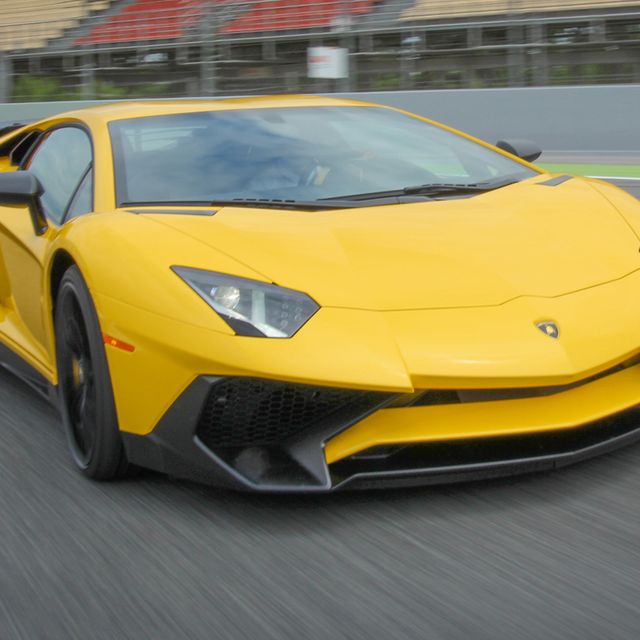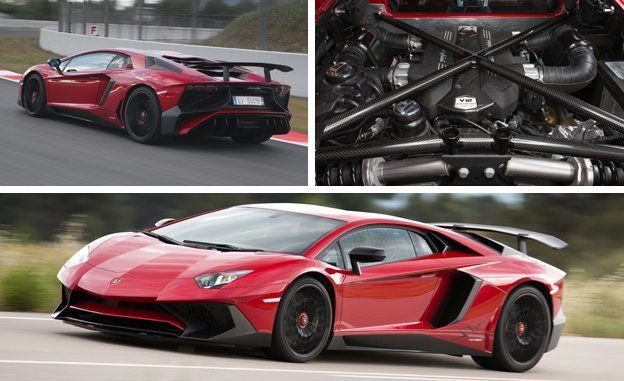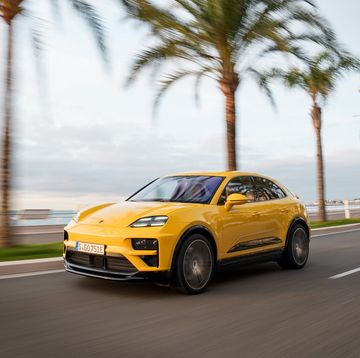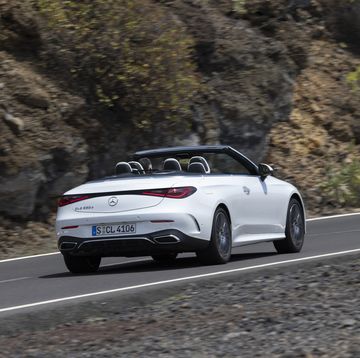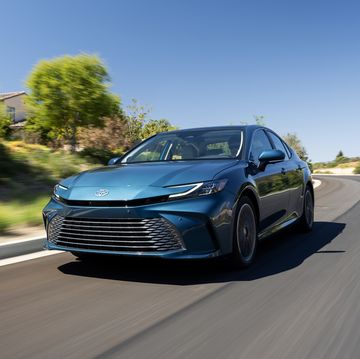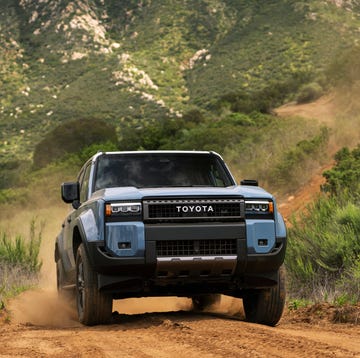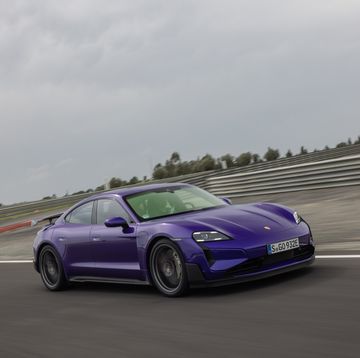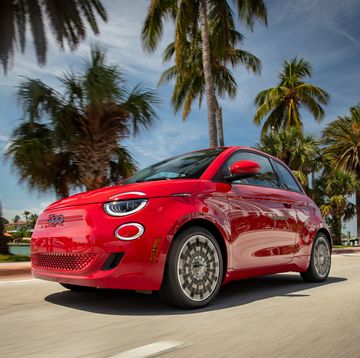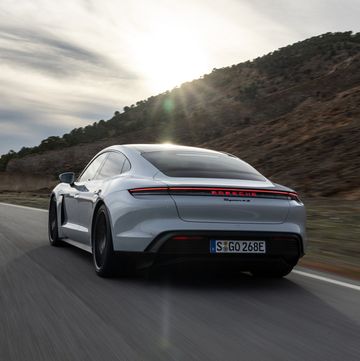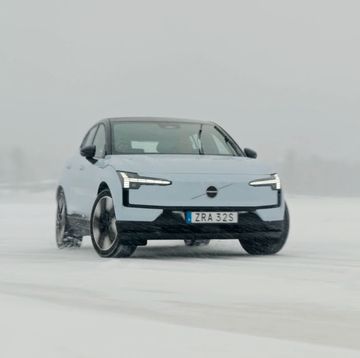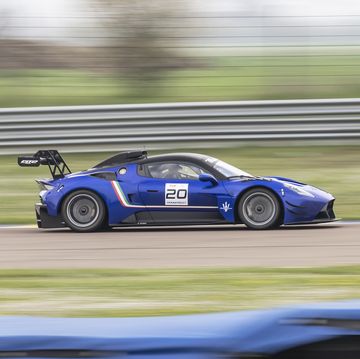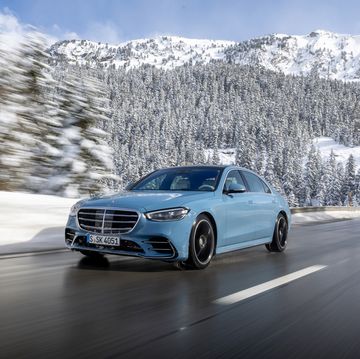“Crazy acceleration.”
That’s what we were promised by, of all things, a PowerPoint slide during the presentation of the new 2016 Lamborghini Aventador SV as we geared up for some lap time at Spain’s Circuit de Barcelona-Catalunya. It’s not often we see “crazy,” with all it implies, during a press presentation, especially by a company hocking its own product, but there it was.
Lamborghini wasn’t calling the whole car crazy, only the acceleration, but it might as well have been. First off, the SV (which stands for “Superveloce,” or “superfast”) packs the same tune for its V-12 as did the hyperexpensive, only-three-were-sold-to-the-public Veneno. It’s Lambo’s most powerful V-12, and it leverages optimized variable valve timing, a new exhaust system, and a higher redline (now 8500 rpm, up from 8350) to raise output to 740 horsepower at 8400 rpm. Torque remains at the same level as in the non-SV Aventador: 509 lb-ft at 5500 rpm. But while the dorsal-finned Veneno’s calling card was its crazy styling, the Superveloce is intended solely to circle a racetrack as quickly as possible. Which it does, having just lapped the Nürburgring in less than seven minutes. Only a “crazy” car can do that.
Helping matters is the claimed weight loss of 110 pounds. That comes courtesy of composite rear fenders and rocker panels, as well as a manually adjustable carbon-fiber wing and fixed C-pillar aero scoops in place of the electronically actuated wing and scoops on the standard Aventador. There’s also much less sound insulation and carpeting (leaving the sexy carbon-fiber structure largely exposed), plus thinly padded fixed-back carbon-fiber racing seats. Other consequential changes include the fitment of lightweight (and gorgeous) new wheels, lateral strut-type magnetic shocks (a production-car first, says Lamborghini), and variable-ratio steering that reduces lock-to-lock motion, particularly with the drive systems in the most aggressive mode, Corsa.
During our laps on the circuit, the first thing we noticed was the sound, carefully engineered to let in the harmonics of the engine but not the less-desirable transmission chatter. The result is a raw, wicked wail that easily drowned out the directions we were being given over an in-car radio issued by Lamborghini.
Lamborghini test pilota Marco Passerini led us around the track, and he wasn’t shy as a driver (or a person), quickly establishing a rapid pace through Catalunya’s 16 corners. Thanks to the SV’s brilliant Haldex-based all-wheel-drive system and bespoke Pirelli rubber—10 inches wide up front, 14 (!) out back—we didn’t feel the need to be shy, either. Grip is everywhere, and, yes, acceleration is absolutely ballistic. Connecting the turns with full-throttle bursts, we were pinned to the seats; by taking each gear all the way to redline, we regularly saw speeds just below 170 mph at the end of the front straight, usually lifting before the braking point lest we get too up close and personal with Passerini’s (slightly) slower, regular-grade Aventador.
Such explosive acceleration means that corners come up, ahem, super fast. More than once we found ourselves charging into a corner so rapidly we felt sure we were toast, but standing on the massive carbon-ceramic brakes yanked the car down reliably so we could hit our turn-in marks and carve across the apex.
Some credit for the stupefying abilities demonstrated by the car can be issued to the astounding high-speed downforce—up by 170 percent, says Lamborghini—which helps keep those fat Pirellis adhered to the pavement during such pucker-inducing braking. As if to prove the point, we watched the rear of Passerini’s car dance around under full brakes while the rear of our car stayed put.
It took a few corners, however, to get used to the new variable-ratio steering. Between the right-now braking, the proactive magnetic dampers keeping things flat, and the extremely quick steering in Corsa mode, turn-in is so immediate that our first laps included making many minor midcorner corrections. We also toggled between Sport and Corsa modes, finding Sport to be amazing in its own right, but we liked the latter even more once we became acclimated to the steering. Corsa also offers hyperspeed shift times and a more textured ride quality than do the slightly softer Sport and softer-still Strada modes.
Back in the pits, we exited the car with a sort of wonder and appreciation for the world—the violence and rawness of the experience had us feeling like we’d had multiple near-death experiences in the span of 10 minutes. Even after multiple sessions, our internal dialogue remained the same: First: “I’m alive.” Second: “What an awesome car.” Third: “My brain might explode, that was so incredible.”
As is the case with most sports cars, lower mass means better performance. Lower mass also usually means more money, and in Lamborghini terms, the cost is precisely $88,400 more than the non-SV model. Bespoke treatments will jack up the price even more, and only 600 SVs will be built. According to several Lamborghini officials present—including CEO Stephan Winkelmann—a future Aventador SV roadster is “possible.” Wink. Nod. Grin. Got it. Figure on a price point about $50K higher, and about 100 pounds of weight added back in. Might that make it slower? It could. Would it still be crazy? You’re damn skippy.
Specifications

